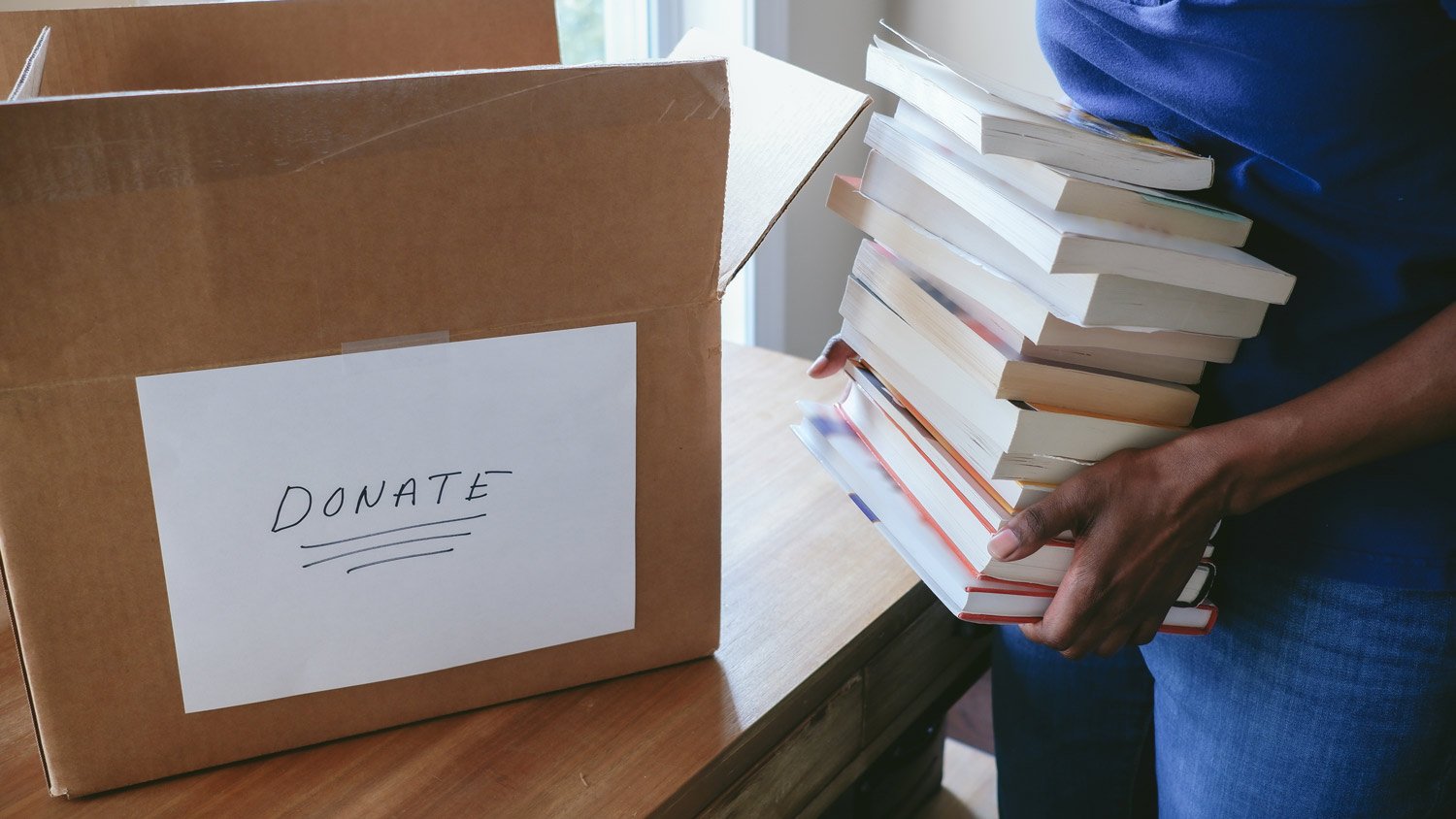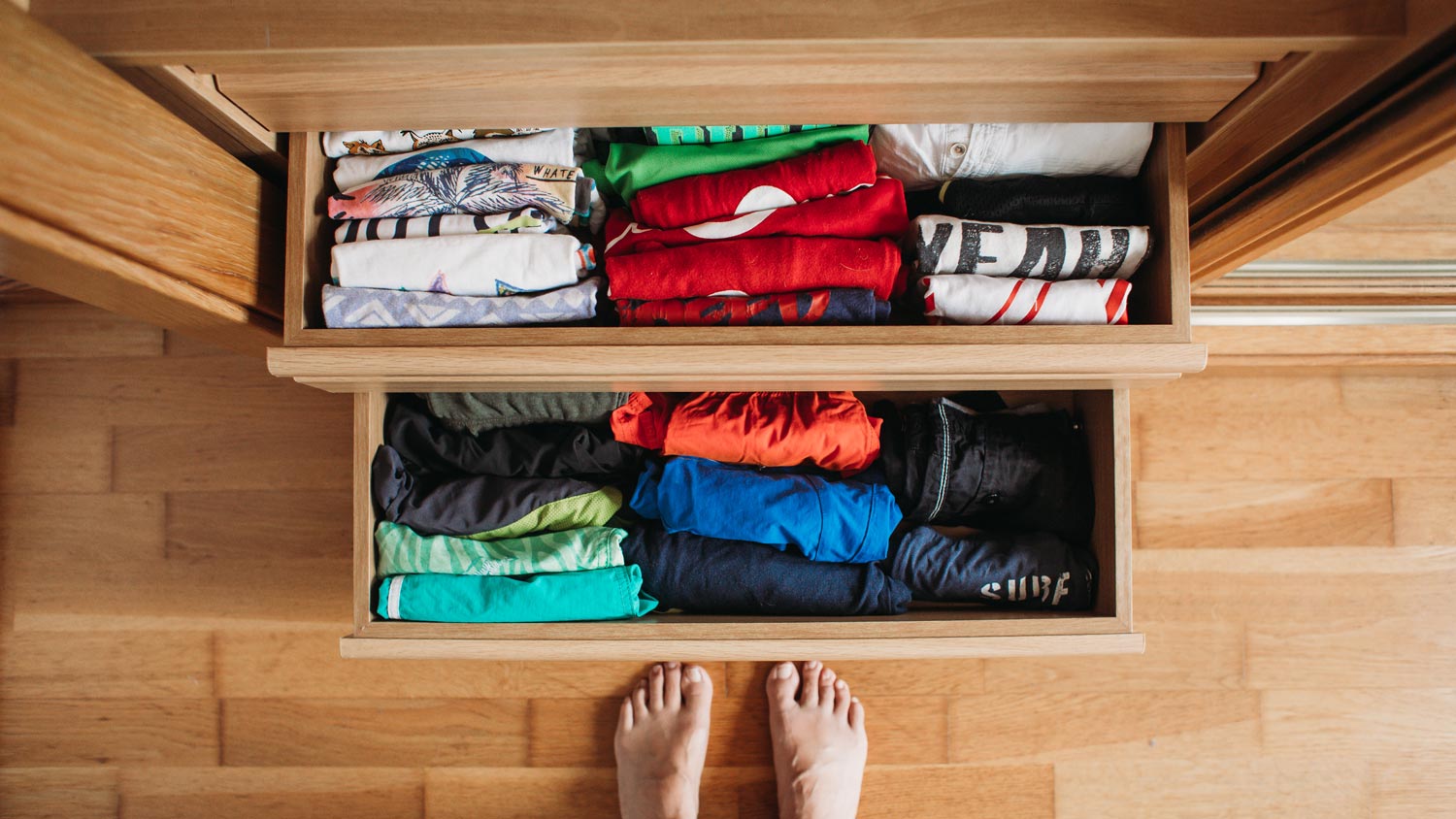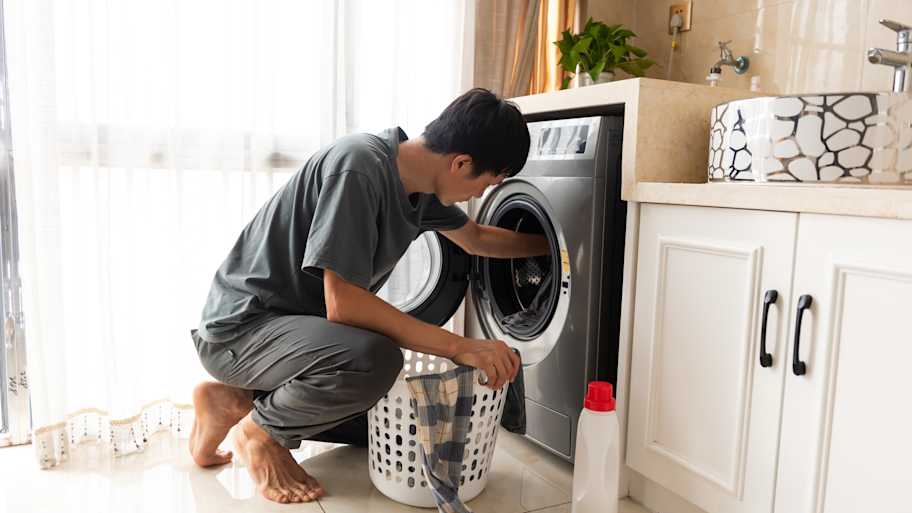
Hiring a professional organizer can help you reset and make your space more functional. Professional home organizer rates vary depending on the size of your project, but luckily, it’s an affordable service on almost any budget.
By making small tweaks to our daily habits, we can control the unwanted piles of clutter to create a cleaner, more balanced home.


Oh, the ongoing curse of clutter. It can often feel like the longer we let it be, the more it grows out of control. But the smallest shifts in organization and daily habits have the power to keep piles of papers to a minimum and make way for clean counters and wide-open tabletops.
Defining clutter is different for everyone. Decorations, piles of electric bills, or collections of old makeup brushes may not make it in everyone's clutter category. For others, peace of mind comes from a fully organized, pared-down home without a loose item in sight.
If you think you have a clutter-free home, it may be worth taking an extra look. Professor of cognitive psychology at the University of California Alan D. Castel, Ph.D. writes that we can develop "clutter blindness." In other words, we get so used to our cluttered homes that we don't recognize how distracting it has become.
"You may want another person’s perspective, as they are not blind to what you see every day and will spot the clutter that you no longer notice," Castel notes.
So, what truly causes clutter and where do we start to create a low-clutter home? The top five culprits include:
A lack of an organizational system
Attachment to items ready for the trash
A change in schedule
Poor storage
Your hobbies need a home
Staying organized goes beyond buying all the newest storage bins and boxes. As we note below, just because something is out of sight doesn't mean it's not still clutter.
A home's organizational system comes down to how you interact with it. If you walk in the door with a pile of mail and have no standard place to separate junk from necessary bills, piles can form in a heartbeat. The same goes for essentials like your keys, wallet, phone. If you cannot reach for an item in under a minute, your organization plan may need an update.
Take a look at how you manage daily tasks in your space. Keeping a home clean has a lot to do with resetting a room before you leave it. For example:
Bringing your coffee mug right to the dishwasher
Placing pens and pencils back in one holder instead of a table or nightstand
Creating home bases for toys and books
Setting up a system for when you come in the door
The more you practice daily habits as simple as hanging your keys on the same hook, the faster they become second nature. Check out a room before you move on with your day and ask yourself if you left clutter or disorganization on your journey.

Letting go of things in your home can be the hardest part. Sometimes the most creative and organized minds justify keeping things around just in case they need them in the future—even the distant future.
Items like bills, cleaning supplies, or notepads can also act as daily reminders we're anxious to release. Over time, these reminder items pile up, eventually making them harder to find when you do need them.
Create a digital system to stay up to date on tasks, errands, and bills. A quick alert on your phone takes the place of a bill left out on the counter.
As for items with sentimental attachments, decide whether the item causes more clutter than it's worth. If not, then make the active decision to keep it around and celebrate it on display. If not, take a photo and donate it or toss it in the trash with warm regards.
Let's face it. We could have all the best organizational habits in the world and a crazy week can completely upend any home. And, if you already struggle with clutter-free practices, distractions can make sticking to habits nearly impossible.
By the end of the week, you've tossed your car keys in the laundry basket, your phone on the bathroom cabinet, and your coffee mug somewhere in the hallway on your way to finding your keys.
First of all, go easy on yourself. There's nothing you can do about a wild day that comes out of the blue. You can, however, set yourself up for success when things calm down.
Look back on the organizational habits we talked about in our first point, such as:
Creating a home for essential items
Making a plan for when you come in the door
Resetting a room before moving on
The more you practice these, the easier they will be able to keep when your schedule turns on its head.
You can also try to set aside time midweek to check in with your house. Instead of trying to clean between your many tasks, reset your rooms when you have a longer moment to breathe.

Too much storage can, ironically, add to the clutter concern. There's only so much you can squeeze into a plastic bin before you start adding piles to the outside of the lid.
Storing items out of sight without consciously choosing why and when you need them leads to bigger problems down the line.
Spend a few days tackling what you have in deep storage—the backs of closets, the attic, the corner of the basement. You can also follow a decluttering checklist as you money through your home. Discard any items that:
You have already replaced somewhere else in your home
You can commemorate with a photograph (old birthday cards, Polaroids, etc.)
You no longer need daily life (old notebooks, clothing, bedding, etc.)
Be sure to clearly mark the boxes of items you do keep. If you're on the fence about something, mark the box with the date. Look through it again in one year. Haven't touched it? It's time to go into the donation bin.
Even items that bring us joy can get in the way and clutter up the house. Sewing kits, cameras, books, and exercise equipment should all have a designated home. Even if you reach for them on a daily basis, keeping them off your tables, counters, and nightstands leaves room for other tasks.
Unlike your long-term storage, create a daily system for your most-used items at arm's reach. Set one drawer aside for your cross-stitch or a special spot on the bookshelf for your current read. This practice helps you move past the "but I'm going to use that soon" mentality, and release it from its cluttering spot.
Controlling clutter doesn't happen overnight, but there are small things you can do each day to shift the way you see your home. While downsizing your possession is part of the process, recalibrating your daily tasks is the key to a peaceful, distraction-free space.
From average costs to expert advice, get all the answers you need to get your job done.

Hiring a professional organizer can help you reset and make your space more functional. Professional home organizer rates vary depending on the size of your project, but luckily, it’s an affordable service on almost any budget.

If your home is a bit messy, that’s perfectly normal. Trusting a professional home organizer to revamp your space can be worth the cost. Here’s how to find and hire a professional organizer.

Discover small closet organization tips to maximize space, reduce clutter, and create a stylish, functional storage area that suits your needs.

Maximize space and save money with these expert storage unit tips. Smart packing strategies and organization hacks included.

When was the last time you cleaned out your spice rack or linen closet? Our list of 12 things to get rid of in just one hour helps you toss what is old, expired, or no longer needed. Decluttering is faster and easier than you might think.

Maximize space and reduce clutter with these smart laundry room organization tips that boost function and even your home’s resale appeal.